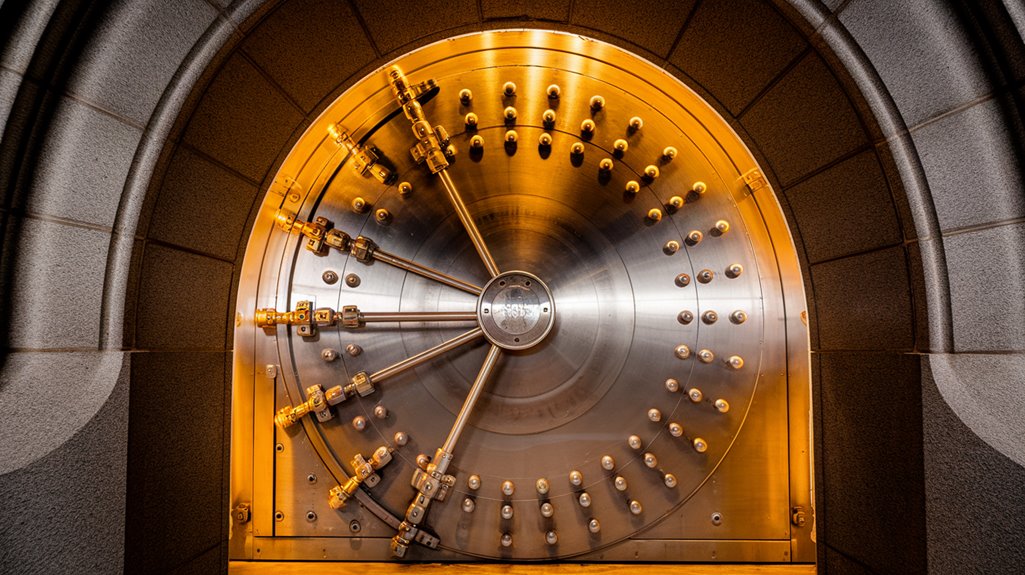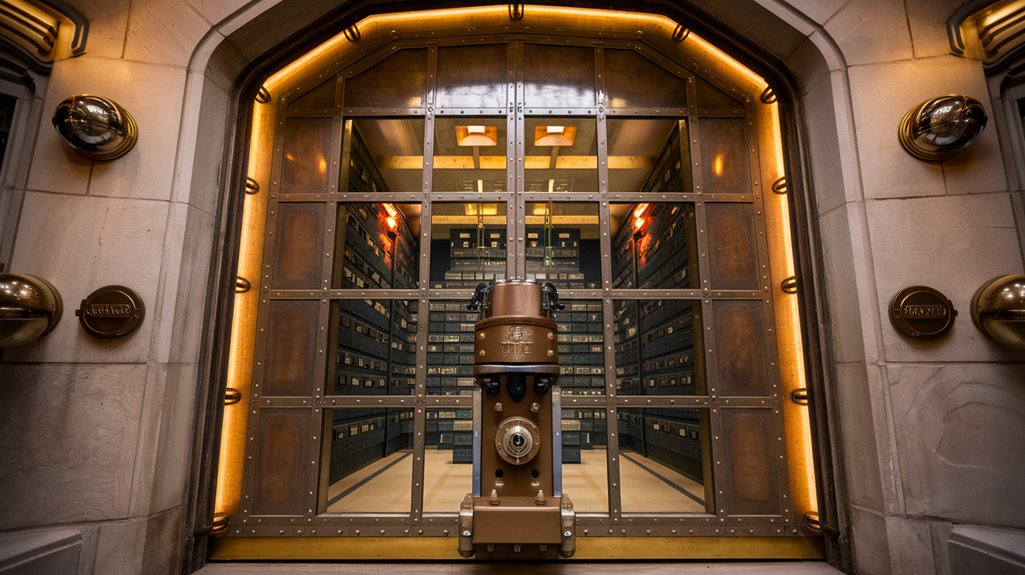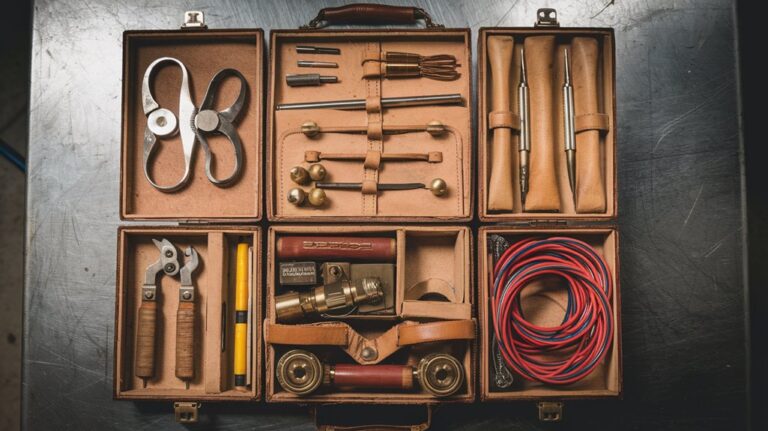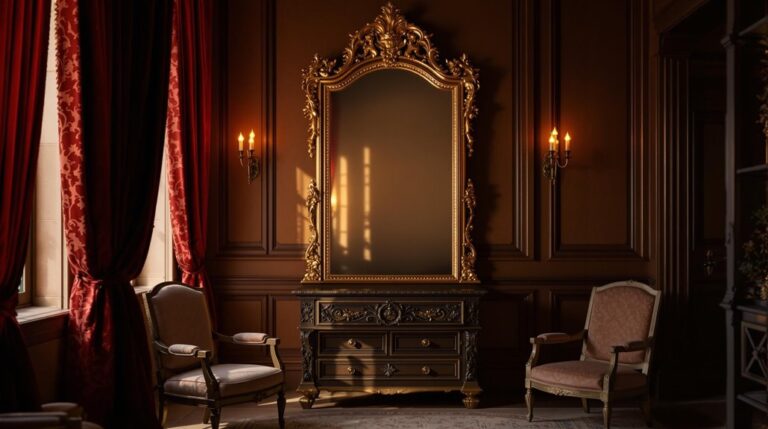Sealed ‘Til 8113: The Crypt of Civilization
While most people plan their lives in years or decades, Dr. Thornwell Jacobs dared to think in millennia. You'll find his ambitious creation, the Crypt of Civilization, sealed within the walls of Phoebe Hearst Hall—a time capsule designed to bridge the gap between 1936 and 8113 A.D. It's not just any container of memories; it's humanity's message in a bottle, carefully crafted to survive six millennia. What secrets and stories lie behind its impenetrable doors?
A Visionary's Time-Defying Dream
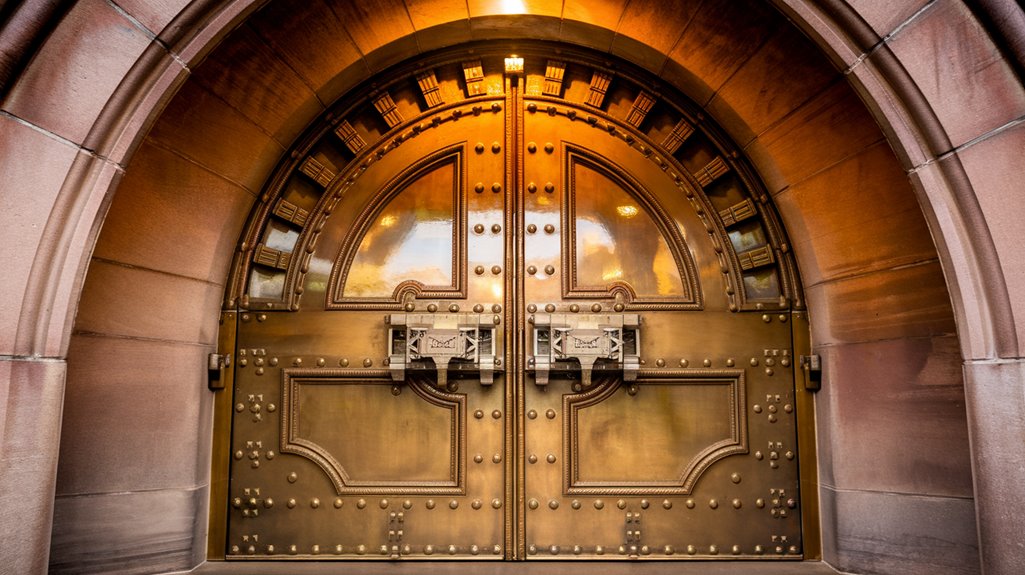
When Dr. Thornwell Jacobs realized how little we knew about ancient civilizations, he envisioned a bold solution that would change how we preserve history. His visionary goals led to the creation of the world's first modern time capsule, known as the Crypt of Civilization.
You'll find the mathematical precision behind his timing fascinating. Using 4241 B.C., the earliest fixed date in history when the Egyptian calendar began, Jacobs calculated 6,177 years to 1936 A.D.
He then projected the same period forward to determine the crypt's opening date: 8113 A.D. This symmetrical approach wasn't arbitrary – it reflected his commitment to creating a thorough snapshot of civilization that future generations could study and understand, unlike the fragmented records we've inherited from ancient times. Built within Phoebe Hearst Hall, the crypt stands as a testament to Jacobs' dedication to preserving our era's legacy. The crypt's contents were carefully preserved in stainless steel containers filled with nitrogen to prevent deterioration over the millennia.
The Science Behind the Seal
Building on Jacobs' meticulous timing, the engineering behind the Crypt of Civilization showcases equally remarkable precision.
You'll find seal technology that was revolutionary for its time, including stainless steel receptacles filled with nitrogen and lined with glass to prevent aging. The crypt design incorporates a waterproof foundation, enamel-plated walls embedded in pitch, and a massive seven-foot-thick stone roof. A team of credentialed experts provided oversight to ensure scientific accuracy in preservation methods.
Inside the 20x10x10 foot chamber, you'll discover cutting-edge preservation methods. This advanced facility houses 640,000 microfilmed pages of humanity's greatest literary and cultural works.
Thomas Kimmwood Peters implemented 35mm microfilming with metal backups, while the National Bureau of Standards provided essential technical guidance.
The crypt's location was strategically chosen for minimal seismic activity, and its contents rest securely behind a welded stainless steel door, protected by a raised concrete floor atop two feet of stone.
Treasures Within the Chamber
Inside the massive steel door of the Crypt of Civilization lies an extraordinary collection of over 800 books, everyday objects, and technological innovations that paint a vivid portrait of human civilization.
You'll find hidden artifacts ranging from microfilmed documents preserving 6,000 years of human knowledge to everyday items like Lincoln Logs and china bowls.
The chamber's cultural significance is reflected in its diverse contents: cinema reels capturing historical moments since 1898, phonograph records of important speeches, and educational materials spanning multiple subjects. Still photographs dating back to 1840 and beyond provide a visual timeline of American history.
The chamber also contains seeds and flora carefully preserved to document the plant life of the era.
There's even a Monroe calculator, dental floss, and an obstetrical model showcasing mid-20th century technology and medical knowledge.
This carefully curated collection includes practical items like aluminum foil and clothing samples, alongside artistic works and scientific instruments, creating an all-encompassing snapshot of human achievement.
Voices From Another Era
Among the crypt's most haunting treasures are the preserved voices and broadcasts that echo from 1937.
You'll find recordings of CBS's "We The People" broadcast, which features discussions about the crypt itself, captured around the 22-minute mark. Of particular historical significance are the recordings from the sealing ceremony, preserving the final moments before the vault was sealed shut.
These audio time capsules represent a unique approach to cultural preservation, sealed within stainless steel containers filled with nitrogen to prevent degradation. The recordings are stored alongside over 640,000 microfilmed pages from hundreds of important works. The collection also includes iconic entertainment pieces like Artie Shaw's clarinet performances.
When the crypt opens in 8113, future generations will hear voices from nearly 6,200 years in their past. While the technology to play these recordings might be obsolete by then, these preserved sounds offer an intimate connection to the people who created this ambitious time capsule.
Legacy and Global Impact
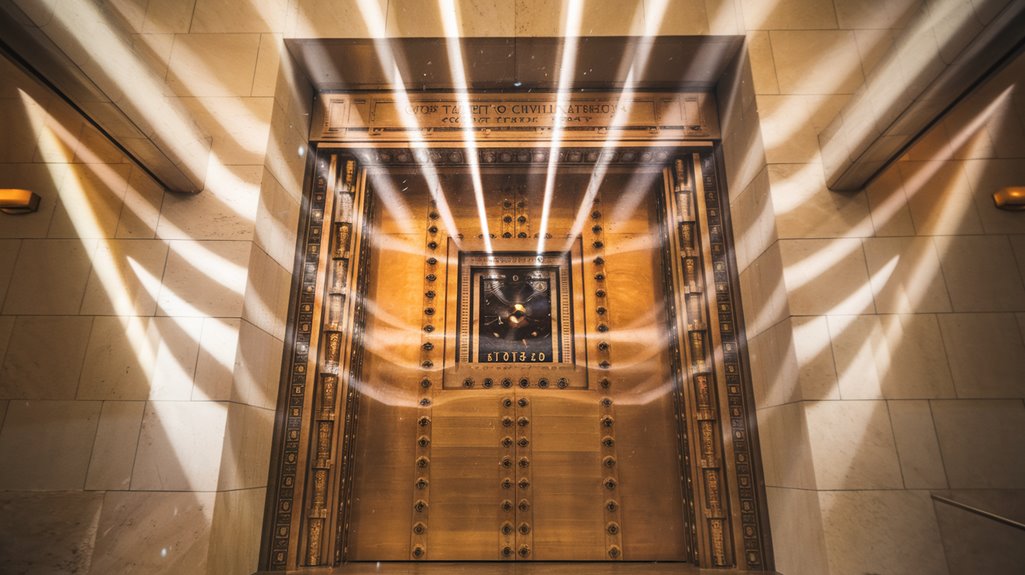
Since its creation in 1936, the Crypt of Civilization has left an indelible mark on global culture as humanity's first successful time capsule.
You'll find its influence in projects like the Westinghouse Company's 1939 World's Fair capsule, which actually coined the term "time capsule." The Crypt's dedication to cultural preservation has garnered international media attention and sparked the founding of the International Time Capsule Society at Oglethorpe University. The facility will remain sealed until 8113 as originally planned by Dr. Thornwell Jacobs.
What makes the Crypt particularly remarkable is its thorough approach to preserving knowledge for future generations. The carefully designed chamber includes a windmill-powered generator to ensure future civilizations can access the electrical devices stored within.
You won't find gold or jewels inside, but rather 640,000 microfilmed pages, newsreels, and everyday items that paint a vivid picture of 20th-century life.
The project's innovative preservation techniques and global promotional efforts have made it a model for time capsule projects worldwide.
Preserving History Until 8113
The Crypt of Civilization's ambitious preservation timeline extends far beyond any other time capsule project, with its scheduled opening date set for 8113 A.D.
You'll find the crypt's historical significance reflected in its meticulous preservation methods. Behind a welded stainless steel door, under seven feet of stone, lie thousands of microfilmed pages and artifacts sealed in nitrogen-filled containers.
The collection includes everything from Hitler's voice recordings to a Donald Duck model, capturing an extensive snapshot of 1930s life.
The future implications of this project are evident in its careful planning. If electricity isn't available in 8113, you'll find a windmill-powered generator to operate the microfilm readers.
There's even a seven-power magnifier as backup, ensuring future generations can access this remarkable time capsule regardless of technological advances.

